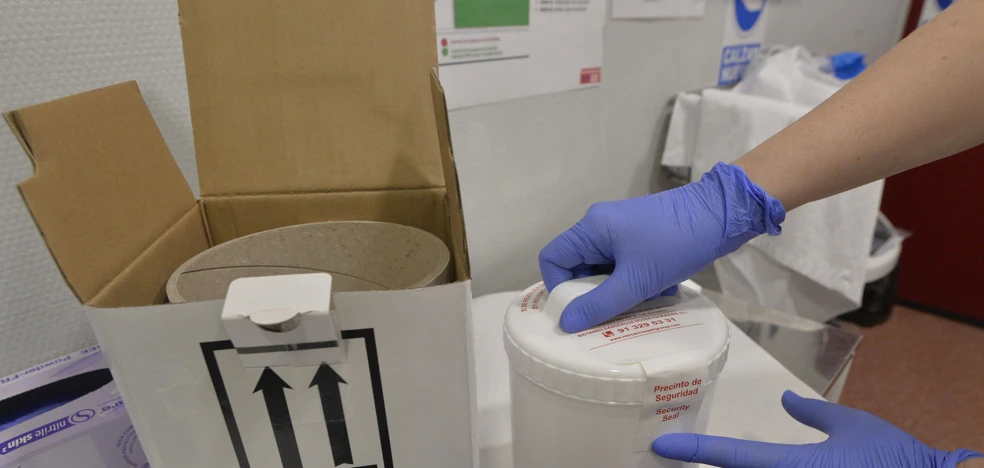A health worker transfers a biological sample at the La Arrixaca Microbiology service. /
Epidemiology has not detected an association between patients so far; one of them will be infected in the Community, and the rest in the other autonomy
The Murcia region already has three confirmed cases of monkeypox, a number that could rise to five when the results of PCR tests carried out on samples of two other patients showing symptoms compatible with the disease are known.
According to the information provided by the Ministry of Health, the three confirmed cases correspond to three men: one aged between 40 and 49 years old who does not live in the Community and two others aged 30 who live in health area I (Murcia Oeste). As for the two “probable” cases, they are two other men aged between 30 and 40 years, also from area I. Samples of these patients have been sent to the National Center for Microbiology for study.

The Ministry’s Epidemiological Service has not found any connection between the different infected people. In all cases, transmission will occur in other communities, except for one. “We are not ruling out that there is transmission within the Territory, but we have not confirmed it,” explained the head of the Epidemiology service, María Dolores Chirlaque, on Monday. Follow-up of close contacts is maintained, while tracing continues.
Chirlaque: “It is very important to avoid stigmatization, as this makes tracking difficult and makes transmission easier”
Public health experts are concerned about the “stigmatization” of patients. “It is very important to avoid this, as it can complicate tracking and facilitate transmission,” Chirlaque warned. The Ministry of Health, for its part, reminded that “regional health systems are ready to deal with this pathology, as well as for its epidemiological diagnosis and control.”
Over 2,000 across Spain
Across Spain, the number of confirmed cases stands at 2,034, according to data from the National Epidemiological Surveillance Network (RENAVE) published last Friday. The reported cases correspond to 16 communities: Madrid (922), Catalonia (665), Andalusia (181), Canary Islands (66), Valencian Community (49), Balearic Islands (35), Basque Country (31), Aragon (23 ). ), Asturias (16), Castilla-La Mancha (12), Galicia (12), Castilla y León (6), Navarra (6), Extremadura (4), Cantabria (3) and Murcia (3).
1,512 infected patients were male and 16 female. There is no information about the rest of those affected. Ages ranged between 3 and 76 years, with a median age of 37. In 89.7% of cases with information on this subject, infection occurred in the context of sexual intercourse, and 10.3% through close non-sexual contact. Most patients present with anogenital and other body rashes (skin rashes), as well as fever.
In the National Epidemiological Surveillance Network there were only 38 cases with clinical complications: the most frequent were secondary bacterial infections and thrush.
Spain remains the country in Europe with the most reported cases. According to the latest Ministry report, 1,490 infections have been detected in Germany, 1,352 in the UK and 577 in France. There have also been outbreaks in many other countries, such as the United States (700 cases). This virus is transmitted through very close physical contact, especially in the context of sexual intercourse.

“Internet trailblazer. Troublemaker. Passionate alcohol lover. Beer advocate. Zombie ninja.”








